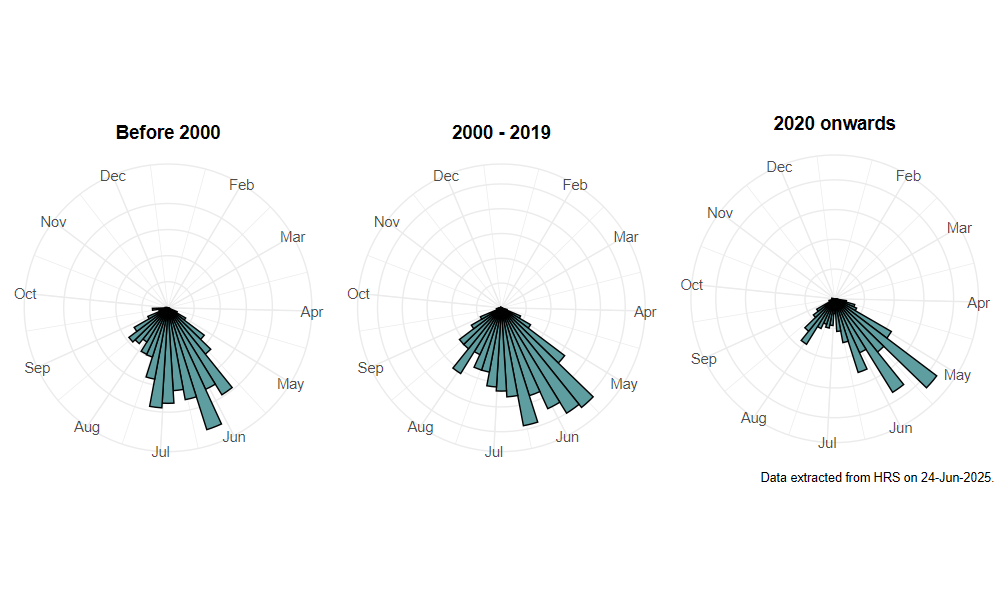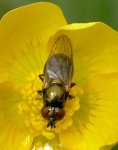Lejogaster metallina (Fabricius, 1781)
Identification
Identification difficulty = 3. ![]()
![]() according to Ball & Morris, 20241
according to Ball & Morris, 20241
Biology
The larva is aquatic and found among plant roots just below the water surface in slow flowing situations. Found in all types of open wetland habitats including wet meadows, marshes, fens and flushes (including mildly acidic conditions), especially where rushes Juncus is abundant. Adults are frequently found visiting flowers, buttercups Ranunculus sp. being especially favoured, usually close to breeding habitat.
Flight period
The following plots show the number of unique records per week excluding those reported to be of immature stages.

Distribution
A widespread and frequent species in suitable localities throughout Britain. There is a noticeable lack of records from parts of eastern England which possibly reflects a combination of limited habitat availability and low rainfall. Records in Scotland seem to be more heavily concentrated in lowland and coastal locations, which is especially apparent in south-west Scotland.

Trends
The following plots show the Frescalo TFactor vs year and a map of the rescaled frequency (all records) for the species.
-
Ball, S., & Morris, R. (2024). Hoverflies of Britain and Ireland. WILDGuides (3rd ed.). Oxford: Princeton University Press. ↩
